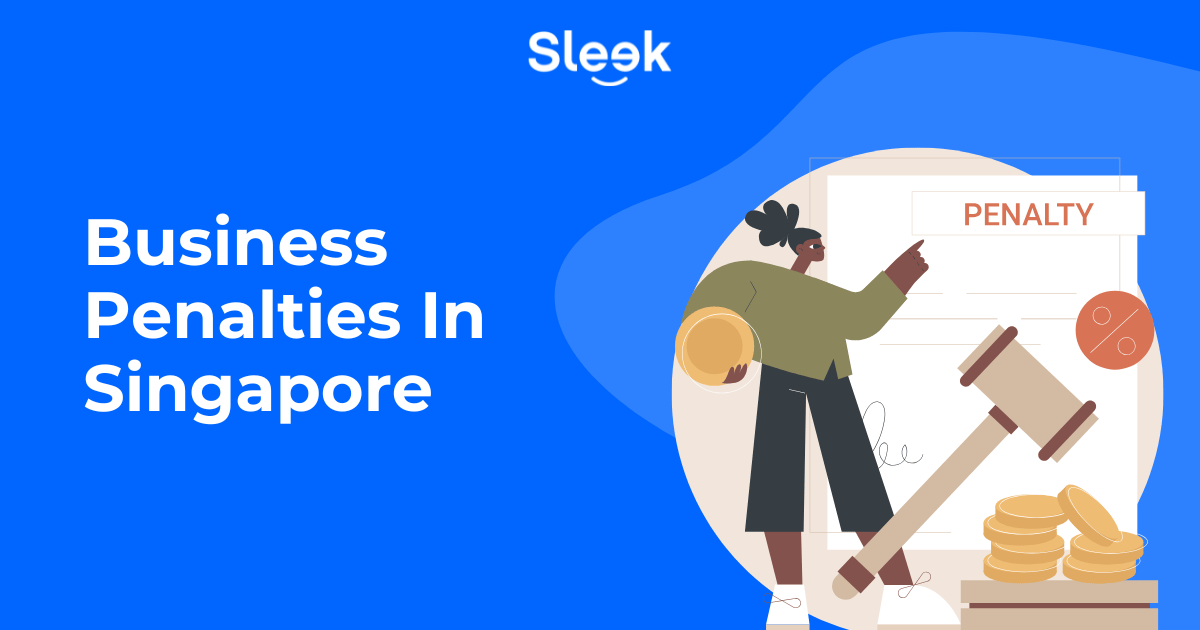What is CPF?
6 minute read
The Central Provident Fund (CPF) is the cornerstone of Singapore’s comprehensive social security system. In short, the CPF is a mandatory scheme. It is a social savings scheme funded by contributions from employers and employees.
Its main purpose is to serve and meet housing, retirement, and healthcare needs. It’s worth noting that the government also supplements the CPF savings of lower-wage workers.
The CPF addresses:
- Healthcare
- Homeownership
- Family protection
- Asset enhancement
If you want to know all the important bits and pieces regarding the CPF, keep reading.
Overview:
- What is the purpose behind CPF?
- How to contribute to CPF?
- Who is eligible for CPF?
- What type of CPF accounts does one have?
- What is the CPF interest rate?
- What is SDL?
What is the purpose behind CPF?
The Central Provident Fund (CPF) has one of the most important (if not even the most important) functions in the social security system of Singapore.
The purpose of CPF is to ensure that every Singaporean has enough money for retirement. Every citizen deserves a calm and nice retirement with enough money to pay for medical bills should they fall ill. Additionally, everyone has the right to buy a home. These are the reasons why the CPF was set up.
In order to achieve this safe and comfortable retirement, people have to put away a percentage of their income every month in CPF accounts.
An employee takes home an amount of money that is a bit lower than the official salary. A portion of each employee’s salary is deducted as CPF contributions every single month. These sums are then deposited into their CPF accounts.
The general idea behind this whole concept was that some people wouldn’t save up any money for their retirement. That would then result in a lot of trouble later on when the time comes to pay all the medical bills.
Additionally, CPF also ensures that the homeownership rate in Singapore remains relatively high since it can only be used to pay for home purchases and not rent.
How to contribute to CPF?
When an employee receives their salary, every single month, the employer is required to withhold the portion of the pay that has to go to the employee’s CPF account.
The given portion will be paid into the employee’s account as the CPF employee contribution.
Additionally, there is also the employer’s contribution. This is the amount of money that the employer is required to contribute to the employee’s CPF account out of their own pocket. This goes beyond the previously stipulated salary.
What is the CPF contribution rate for Singaporean employees?
Take a look at the table below to see how much each employee has to contribute to the Fund:
| Age of employee | CPF contribution by employer | Employee CPF contribution | Total Singapore CPF rate |
| Up to 55 years old | 17% | 20% | 37% |
| 55 to 60 years old | 13% | 13% | 26% |
| 60 to 65 years old | 9% | 7.5% | 16.5% |
| Above 65 years old | 7.5% | 5% | 12.5% |
Bear in mind that over the next 10 years, CPF contributions for older workers will be gradually adjusted upwards in order to meet the full contribution rate of 37% (employee + employer). This applies to contributors aged 55 and above.
The CPF contribution rates will only drop after the age of 60.
How to pay CPF?
To make Voluntary Contributions, the following steps should be taken:
1) Visit the CPF website and access its services. Under that section, click on e-Cashier.
2) An employee needs to put in their NRIC number and then select Member and either Contribute to my three CPF accounts (Non-tax deductible) or Contribute to my MediSave (Tax deductible) and click Next.
3) The verification code needs to be entered once it’s displayed. Then click Start.
4) Once everything is loaded and the terms and conditions have been accepted, you need to click on Check Available Contribution.
5) Again, an employee needs to put in their Singpass ID and Password to log in.
6) Finally, once that is done, the employee needs to put in the 6-digit OTP and click on Submit.
A message will follow where you can see how much you can actually contribute. This result is valid only if the employee does not receive any other contributions before the end of the year.
Furthermore, if there are other contributions being processed before the employee’s VC payment, the VC may exceed the CPF Annual Limit/Basic Healthcare Sum(BHS) and will be refunded without interest.
Do know that Mandatory Contributions (MC) made by employers take precedence over VC when determining any excess above the CPF Annual Limit.
Employees need to take into account the total amount of MC that they would receive for the year before computing the amount of VC they can make.
Is the CPF contribution taxable?
It is worth noting that employer CPF contributions made to an employee’s CPF account are taxable when these deposits are voluntary contributions.
On the contrary, compulsory CPF contributions are not taxable in general.
1) Compulsory CPF Contributions related to employment in Singapore – Taxable
2) Voluntary CPF Contributions related to employment in Singapore – Taxable
3) Contributions made from 1 Jan 2004 relating to employment outside Singapore – Not taxable
4) Contributions related to Director’s Fees – Taxable
Who is eligible for CPF?
An individual is entitled to CPF contributions from their employer if they are an employee and a Singapore citizen or a permanent resident of Singapore.
CPF contributions are payable when there is a signed contract of service between an employer and an employee.
Employers must pay both the CPF employer contribution and employee’s share of CPF contributions every month. They are entitled to recover the employee’s share from the employee’s wages.
These contributions are payable for Singapore citizens and Singapore permanent residents who are either working in Singapore under a contract or service or are employed under a permanent, part-time, or casual basis.
Do foreigners have to pay CPF?
Foreign citizens only have to begin their monthly contributions to the CPF after having assumed the status of being a permanent resident.
During the first two years as a permanent citizen in Singapore, contribution rates to CPF are reduced.
What is your CPF number?
If you are a Singaporean citizen, your CPF number is your NRIC number (for instance, S1234567F).
For a child who has not yet received their NRIC, the CPF account number is its Singapore Birth Certificate number or Citizenship Certificate number (if it received Singapore Citizenship after birth), e.g. T1234567F.
For a child that is a Permanent Resident, its CPF account number is the Unique Identification Number (UIN) stated on its Entry Permit (for instance, T1234567F).
On the other hand, foreigners who were previously Singaporean citizens or held permanent residency status can find their CPF account numbers in their ex-NRIC numbers. That is, the NRIC numbers are the numbers of their CPF accounts.
What type of CPF accounts does one have?
All citizens of Singapore or permanent resident status holders have the following CPF accounts.
| CPF account | Its purpose |
| Ordinary Account (OA) | It can be used for housing, higher education, and investing. Anything left over is to be used for retirement. |
| Special Account (SA) | To be saved for retirement. It can also be invested to a certain degree. |
| Medisave Account (MA) | To pay for hospitalization, other approved medical expenses and to pay for MediShield / Integrated Shield plans. |
| Retirement Account (RA) | You only get an RA when you turn 55. |
What is the CPF interest rate?
When people save up money in their bank accounts, they know that the money nested is prone to get eroded. In other words, bank account interest rates tend to be low, so they most likely can’t effectively hedge against inflation.
Fortunately, the money in a person’s CPF account earns interest too. However, the rates are much better than your typical bank account.
Take a look at the interest rates at the moment.
- Ordinary Account – 2.5%
- Special Account – 4%
- Medisave Account – 4%
- Retirement Account – 4%
Keep in mind that SAs offer a better interest rate compared to the OAs.
In order to get a much better interest rate on a person’s OA savings, one has to transfer the money from their OA to their SA.
But, know that once you transfer money into your SA, you can’t transfer that money back to your OA.
What is SDL?
Skills Development Levy (SDL) is a compulsory levy that a person has to pay for all their employees working in Singapore on top of CPF contributions and Foreign Worker Levy.
The SDL collected is channeled to the Skills Development Fund (SDF), which is used to support workforce upgrading programs and to provide training grants to employers when they send their employees for training under the National Continuing Education Training system.
An employer has to pay SDL for all their employees working in Singapore, including:
1) Employees employed on a permanent, part-time, casual, and temporary basis
2) Foreign employees on work permits and employment pass holders
Final thoughts
You now have answers to all your questions regarding the CPF in Singapore. Hopefully, this article was comprehensive enough to give you all the information you need.
However, if you need more help or more info about the CPF, feel free to contact our Payroll team at Sleek!
You might be interested in reading about:









